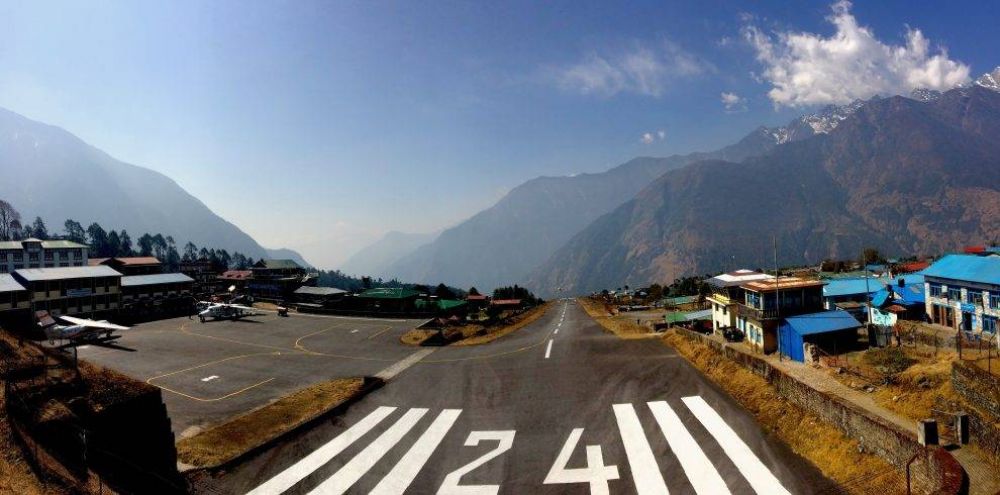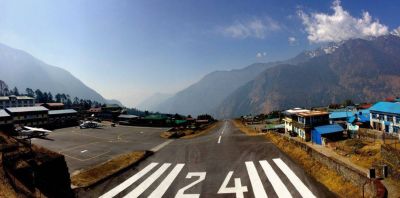

The trek to Everest Base Camp is one of the most famous treks in the world, attracting adventurers from every corner of the globe. Starting from Lukla, a gateway to the Everest region, this trek takes you through the heart of the Khumbu Valley, allowing you to experience the unique culture of the Sherpa people and visit ancient monasteries. As you ascend through alpine meadows and glacial rivers, you’ll enjoy stunning vistas of some of the highest peaks on the planet. Acclimatization days are included to help you adjust to the high altitude, ensuring a more comfortable trekking experience. Reaching the base camp, you’ll be rewarded with an up-close view of the awe-inspiring Everest, known locally as Sagarmatha. The journey typically lasts 12 to 14 days, depending on your itinerary and pace.
The trek to the Gokyo Lakes is an exceptional journey that offers a less crowded alternative to the traditional Everest Base Camp trek, with equally magnificent scenery. Setting out from Lukla, trekkers cross lush valleys, traditional villages, and high passes, with breathtaking sights of turquoise lakes, glaciers, and panoramic views from Gokyo Ri, one of the best vantage points in the region. The Gokyo Lakes are the world's highest freshwater lake system, and reaching them involves hiking past several of these serene water bodies. Besides the scenery, you'll have the chance to spot high-alpine wildlife and to visit the Ngozumpa Glacier—Nepal's largest glacier. Typically, the trek spans 12 to 15 days, and is suitable for those with good fitness levels and an adventurous spirit.
If trekking is not your preference, taking a scenic flight around Mount Everest presents an ideal way to witness the majesty of the Himalayas. From Lukla, you can embark on a breathtaking flight that grants you a bird's eye view of Everest and the surrounding peaks. The experience is a quick yet stunning adventure, offering panoramic views of some of the tallest mountains in the world, including Lhotse, Nuptse, and Makalu. Accompanied by a knowledgeable pilot who provides insights into the landscapes below, you’ll capture the wonder of the Everest region in an entirely new way. The flight usually lasts about an hour and is perfect for those who are pressed for time but still wish to experience the grandeur of these iconic peaks.
Visiting the Tengboche Monastery offers a spiritual and cultural experience set against the backdrop of the Himalayas. The monastery is a significant Buddhist site and a resting point on the Everest Base Camp trek. Located at an altitude of 3,867 meters, it is considered the largest gompa in the Khumbu region. Trekkers often visit the monastery to receive blessings for a safe journey. The monastery itself boasts a rich history and intricate wall murals, and it hosts the Mani Rimdu festival annually, a colorful event that attracts visitors from around the world. With Mount Ama Dablam towering above it, the location is picturesque and serene. A visit to Tengboche can be a day excursion from surrounding villages or included as part of a longer trek.
Nestled in the heart of the Khumbu region, Khumjung Village is often referred to as the 'Green Valley' and is famous for its traditional Sherpa culture and community. A day hike from Lukla to this village allows travelers to immerse themselves in the peaceful settings, away from the more frequented trekking paths. You’ll be able to explore the Khumjung monastery, see the famous Yeti skull, and visit the Khumjung Hillary School, established by Sir Edmund Hillary’s Himalayan Trust in 1961. Along with cultural insights, the hike also provides ample opportunities to enjoy magnificent views of Ama Dablam and Thamserku peaks. Generally, a visit to Khumjung can be accomplished in one day, making it a great addition to any trekker’s itinerary.
The helicopter tour to Kala Patthar is an extraordinary adventure for those wishing to experience the grandeur of Everest without the commitment of a multi-day trek. Departing from Lukla, this tour whisks you over the dramatic landscapes of the Khumbu region and lands at Kala Patthar, a famous viewpoint right opposite Mount Everest. Offering probably the best vantage point for witnessing the highest peak on Earth, this tour is a photographer’s dream. The excursion is fast-paced and thrilling, with pilots expertly navigating the terrain. Suitable for all ages and fitness levels, the helicopter tour is an unforgettable experience that allows you to touch the heart of the Himalayas and return in a matter of hours.
For those looking for a mountaineering challenge, the climb to Island Peak, locally known as Imja Tse, provides an exhilarating experience. With an altitude of 6,189 meters, Island Peak is a popular climbing peak in Nepal, offering a significant challenge and rewarding climbers with incredible views of the surrounding Himalayan giants. The climb typically involves an exciting mixture of hiking, trekking, and glacier travel, and requires a good level of physical fitness and some basic mountaineering skills. Most climbers combine the Island Peak ascent with the Everest Base Camp trek for acclimatization and a full Himalayan experience. The entire expedition can take around 16 to 20 days, including trekking and climbing phases, and it's a notable milestone for any adventurer.
Although not as traditional as trekking, zip flying is an emerging adventure activity offered in the Lukla region. It's an exciting opportunity for thrill-seekers looking to experience the Himalayan landscape with a rush of adrenaline. The zip line is one of the world's highest, steepest, and fastest, giving you a unique perspective as you soar above the valleys and rivers at high speeds. Safety is paramount, and operators provide thorough briefings and use state-of-the-art equipment to ensure a safe, yet exhilarating ride. While it might only last a few minutes, the memories of flying through the mountain air are sure to last a lifetime.
Dedicated to the Sherpa people and their rich heritage, the Sherpa Culture Museum in Lukla is an educational and inspiring attraction. The museum displays traditional Sherpa artifacts, clothing, and tools, offering visitors a glimpse into the daily lives and customs of these renowned mountain dwellers. You can learn about Sherpa history, famous mountaineers from the community, and the vital role they play in Himalayan expeditions. The museum is typically included as a stop on many trekking itineraries and can also be visited independently for those interested in the anthropology of the Everest region. Plan for a visit to last about one to two hours, with a small entry fee to support its maintenance.
Located along the route to Everest Base Camp, Phakding is home to rock climbing opportunities for those looking to test their skills on natural Himalayan stone. With routes set up for various skill levels, from beginners to experienced climbers, this activity provides a fun and challenging break from trekking. Under the guidance of local experts, you can safely enjoy climbing while taking in the scenic beauty of the Dudh Kosi River valley. The duration of the climb depends on your interests and proficiency, but whether you scale the rock for an hour or spend a full day, it's a memorable way to engage with the landscape and push your physical limits.
